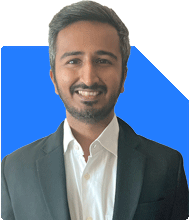Ramalingam Kalirajan |9712 Answers |Ask -Follow
Mutual Funds, Financial Planning Expert - Answered on Jun 23, 2024
He has an MBA in finance from the University of Madras and is a certified financial planner.
He is the director and chief financial planner at Holistic Investment, a Chennai-based firm that offers financial planning and wealth management advice.... more

I am now 62 and retired. Having 1.75 cr in Mutual fund, 20 lacks in scsc, 10 lacks in gold,40 lack in equity and 5 lack in liquid. Need 1.5 lack SWP for monthly expenses. Pl suggest where should I invest and get monthly of 1.5 lack without reducing my investment
Understanding Your Financial Goal
Monthly Withdrawal Requirement:
You need Rs 1.5 lakhs per month, which amounts to Rs 18 lakhs annually.
Current Portfolio:
Mutual Funds: Rs 1.75 crores
SCSS: Rs 20 lakhs
Gold: Rs 10 lakhs
Equity: Rs 40 lakhs
Liquid Funds: Rs 5 lakhs
Strategic Investment Allocation
To generate a monthly income of Rs 1.5 lakhs, we need to optimize your portfolio to ensure both growth and stability.
Utilizing Systematic Withdrawal Plan (SWP)
1. SWP from Mutual Funds:
SWP from mutual funds can provide a steady monthly income. You can set up an SWP to withdraw Rs 1.5 lakhs monthly.
Benefits of SWP:
Regular income stream.
Tax-efficient.
Keeps your capital growing.
Allocating Your Portfolio for Optimal Returns
1. Debt Mutual Funds:
Allocate a significant portion to debt mutual funds. They provide stability and regular income.
Suggested Allocation:
60% in Debt Funds: Rs 1.05 crores in debt mutual funds.
40% in Equity Funds: Rs 70 lakhs in equity mutual funds.
This ensures a balanced approach with stability and growth.
Enhancing Your Current Investments
1. SCSS (Senior Citizens' Savings Scheme):
SCSS provides guaranteed returns and regular income. Continue to keep Rs 20 lakhs in SCSS.
2. Gold Investments:
Gold is a good hedge against inflation. Maintain your Rs 10 lakhs in gold for diversification.
3. Direct Equity:
Your Rs 40 lakhs in direct equity can be left for long-term growth. Monitor and rebalance periodically.
4. Liquid Funds:
Rs 5 lakhs in liquid funds acts as your emergency fund. This should cover any immediate financial needs.
Implementing the Systematic Withdrawal Plan
1. Setting Up SWP:
Set up an SWP from your debt mutual funds. Withdraw Rs 1.5 lakhs monthly. This provides a steady income stream while preserving your capital.
2. Rebalancing:
Review and rebalance your portfolio annually. Shift some gains from equity to debt to maintain the 60-40 allocation. This ensures stability and growth.
Managing Risks and Ensuring Growth
1. Diversification:
Diversify your investments within debt and equity mutual funds. Choose funds from different categories and sectors to spread risk.
2. Regular Review:
Review your investments quarterly. Monitor performance and make adjustments if needed. Regular reviews keep your portfolio aligned with your goals.
3. Professional Guidance:
Consider consulting a Certified Financial Planner. They can provide tailored advice and help you make informed decisions.
Tax Efficiency
1. Tax on SWP:
SWP withdrawals from mutual funds are more tax-efficient than traditional fixed deposits. Only the capital gains portion is taxed.
2. Long-term vs Short-term Gains:
Hold your equity investments for more than a year to benefit from long-term capital gains tax rates, which are lower than short-term rates.
Contingency Planning
1. Emergency Fund:
Keep an emergency fund to cover at least six months of expenses. This ensures you don’t have to withdraw from your investments during market downturns.
2. Health Insurance:
Maintain comprehensive health insurance to cover medical emergencies. This prevents erosion of your savings due to unexpected medical expenses.
Creating a Sustainable Income Plan
1. Estimating Expenses:
Estimate your monthly expenses during retirement. Consider inflation and potential lifestyle changes to ensure you have a realistic figure.
2. Planning for Longevity:
Plan for a longer retirement period. Ensure your investments can support you through your expected lifespan.
3. Considering Health and Medical Costs:
Healthcare costs tend to rise with age. Ensure you have adequate savings and insurance to cover medical expenses during retirement.
Building a Robust Financial Plan
1. Set Clear Financial Milestones:
Break down your retirement goal into smaller, achievable milestones. Track your progress and adjust your strategy as needed.
2. Budget and Save Aggressively:
Maintain a disciplined approach to budgeting and saving. Allocate a significant portion of your income towards investments to accelerate wealth accumulation.
3. Maximize Tax-Advantaged Investments:
Utilize tax-advantaged accounts like PPF and NPS to enhance returns and save on taxes. These are excellent for long-term savings with added tax benefits.
Final Insights
Your diversified portfolio and strategic investments can help you achieve your goal of withdrawing Rs 1.5 lakhs monthly. Utilize an SWP from a balanced portfolio of debt and equity mutual funds. Ensure diversification, regular review, and rebalancing to manage risk and grow your corpus. With disciplined planning and strategic investments, you can enjoy a steady income and financial security in retirement.
Best Regards,
K. Ramalingam, MBA, CFP,
Chief Financial Planner,
www.holisticinvestment.in
You may like to see similar questions and answers below
Sunil Lala | Answer |Ask -Follow
Financial Planner - Answered on Jan 19, 2024
Ramalingam Kalirajan |9712 Answers |Ask -Follow
Mutual Funds, Financial Planning Expert - Answered on May 06, 2024
Ramalingam Kalirajan |9712 Answers |Ask -Follow
Mutual Funds, Financial Planning Expert - Answered on May 07, 2024
Ramalingam Kalirajan |9712 Answers |Ask -Follow
Mutual Funds, Financial Planning Expert - Answered on Aug 23, 2024
Vivek Lala | Answer |Ask -Follow
Tax, MF Expert - Answered on Oct 25, 2024
Radheshyam Zanwar |5298 Answers |Ask -Follow
MHT-CET, IIT-JEE, NEET-UG Expert - Answered on Jul 13, 2025
Radheshyam Zanwar |5298 Answers |Ask -Follow
MHT-CET, IIT-JEE, NEET-UG Expert - Answered on Jul 13, 2025
Radheshyam Zanwar |5298 Answers |Ask -Follow
MHT-CET, IIT-JEE, NEET-UG Expert - Answered on Jul 13, 2025
Radheshyam Zanwar |5298 Answers |Ask -Follow
MHT-CET, IIT-JEE, NEET-UG Expert - Answered on Jul 13, 2025
Radheshyam Zanwar |5298 Answers |Ask -Follow
MHT-CET, IIT-JEE, NEET-UG Expert - Answered on Jul 13, 2025
Radheshyam Zanwar |5298 Answers |Ask -Follow
MHT-CET, IIT-JEE, NEET-UG Expert - Answered on Jul 13, 2025
Radheshyam Zanwar |5298 Answers |Ask -Follow
MHT-CET, IIT-JEE, NEET-UG Expert - Answered on Jul 13, 2025
Radheshyam Zanwar |5298 Answers |Ask -Follow
MHT-CET, IIT-JEE, NEET-UG Expert - Answered on Jul 13, 2025
Nayagam P P |8696 Answers |Ask -Follow
Career Counsellor - Answered on Jul 13, 2025
Dr Dipankar Dutta |1734 Answers |Ask -Follow
Tech Careers and Skill Development Expert - Answered on Jul 13, 2025










.jpg)










